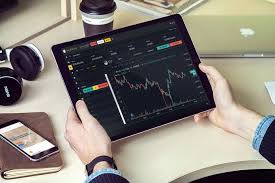Contracts for Difference (CFDs) have gained popularity among investors in recent years due to their flexibility and potential profits. CFDs are a type of derivative that allows traders to speculate on the rise or fall of an underlying asset’s value without actually holding any physical assets. This makes CFDs a popular trading instrument for stock, forex, and commodity markets. In this blog post, we’ll explore the basics of CFD trading and how you can master this trading instrument.
Understanding CFDs:
CFDs are agreements between a trader and a broker to exchange the price difference of the underlying asset at the opening and closing of the trade. In simple terms, the trader opens a position on an asset, and the broker pays the difference when the trade is closed. CFDs allow traders to speculate on both rising and falling markets, making it possible to profit from market swings. It is essential to note that CFDs come with risks, just like any other trading instrument, and traders need to understand the market before investing.
Choosing a Broker:
The broker you choose is crucial to your success as a CFD trader. It’s essential to find a reputable broker who offers a variety of trading platforms, favorable spreads, and leverage options. Additionally, brokers offer educational resources to help you understand the market and trading tools that will help you analyze the market. It’s essential to research different brokers before choosing one that meets your trading needs.
Risk Management:
cfd trading can be risky, and traders must have risk management strategies to protect their investment. Traders should set stop-loss orders to limit their losses and take-profit orders to lock in profit. These orders help traders control their emotions and prevent them from making impulsive decisions that could harm their investment. It’s also essential to maintain a trading journal to help you identify patterns and make informed trading decisions.
Technical Analysis:
CFD traders utilize technical analysis to understand market behavior and speculate on price movements. Technical analysis is the study of charts and indicators that show price history, volume trends, and other market data. Traders use technical indicators to identify entry and exit points and make informed trading decisions. Learning to read charts and use technical indicators is essential to successful CFD trading.
Conclusion:
CFD trading can be a profitable investment opportunity, but it also comes with risks. It’s essential to understand the market, choose a reputable broker, and have risk management strategies in place before investing. Utilizing technical analysis and understanding trading tools can help you make informed trading decisions, and maintaining a trading journal can help you identify patterns and adjust your strategies accordingly. With these tips in mind, you can master the basics of CFD trading and become a successful CFD trader.

